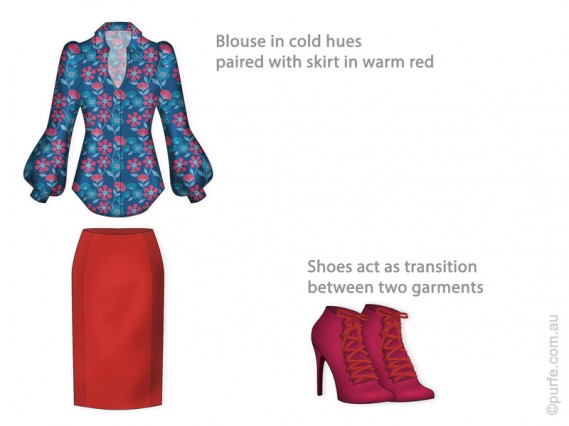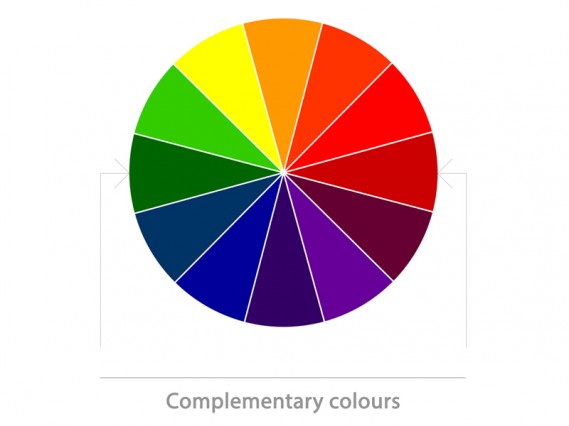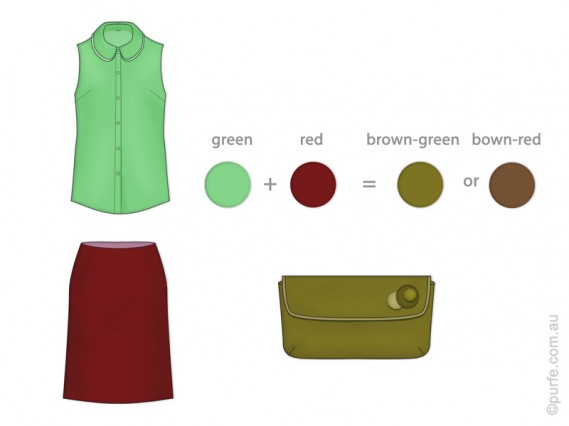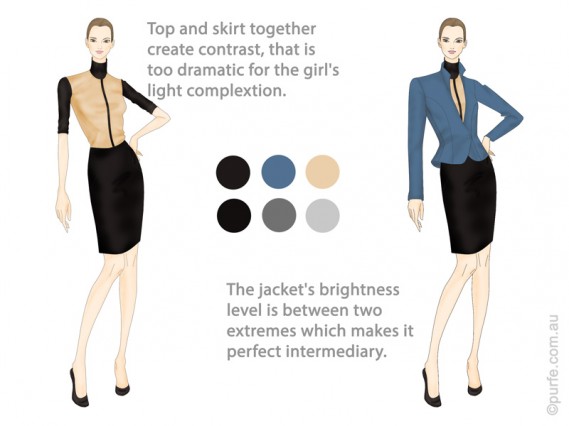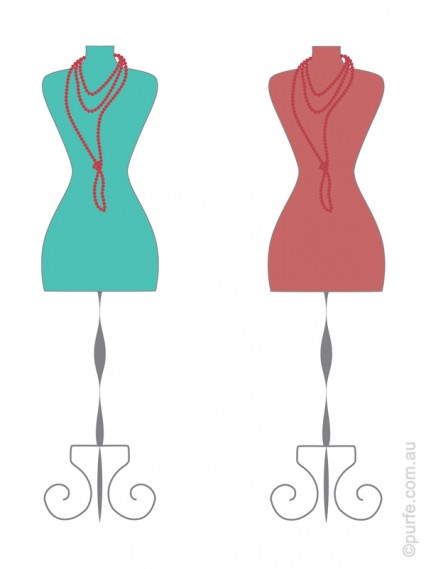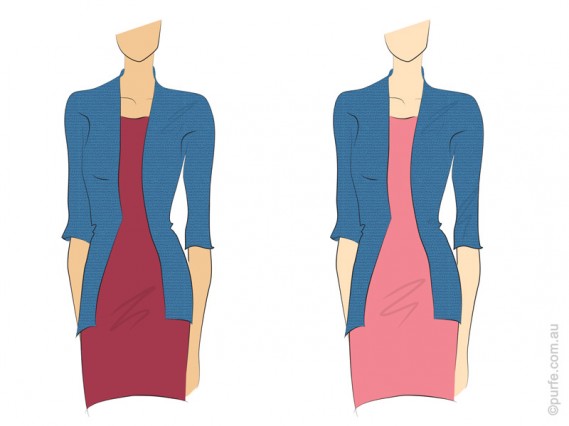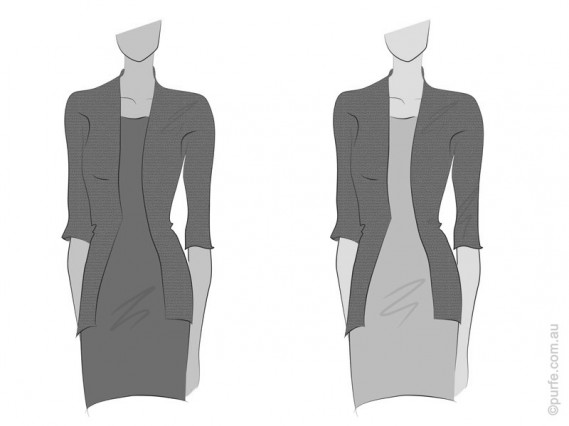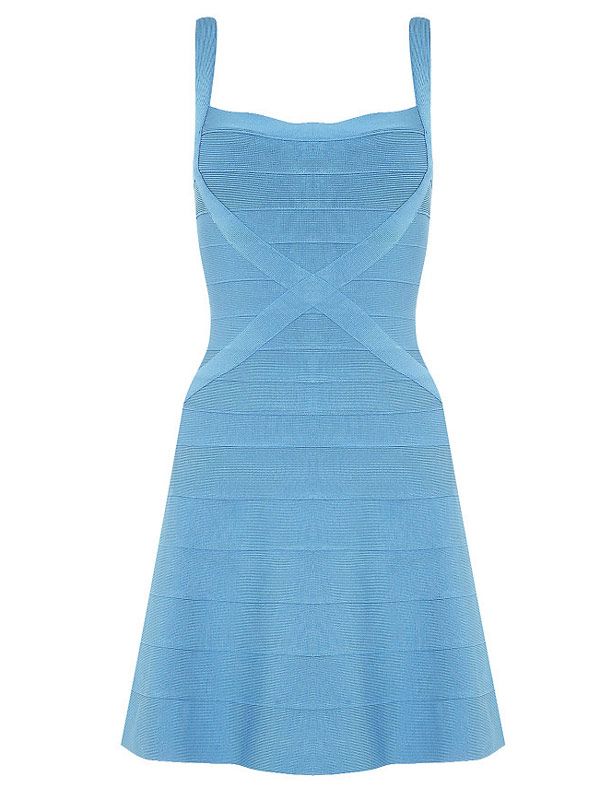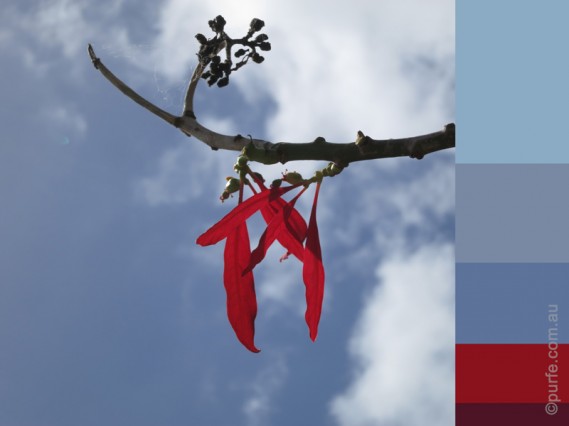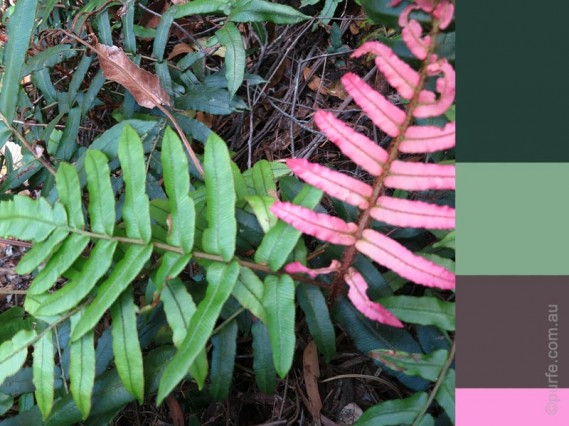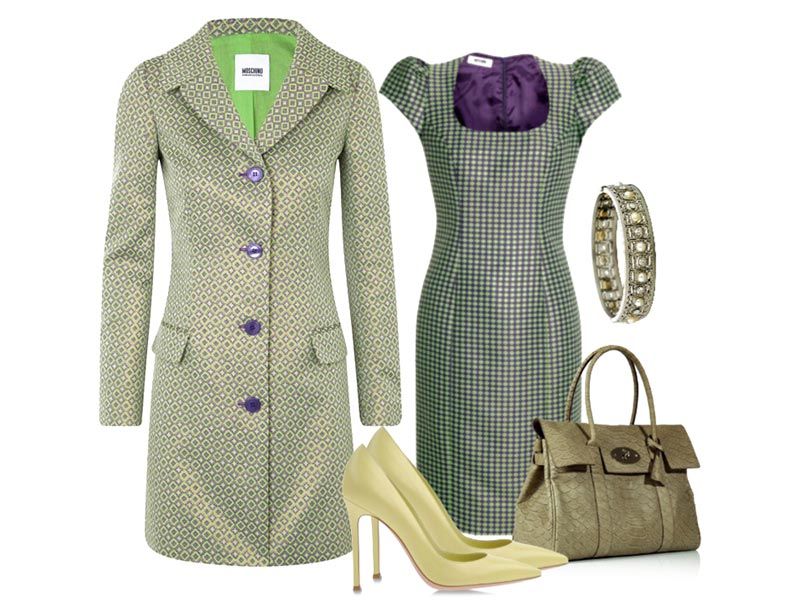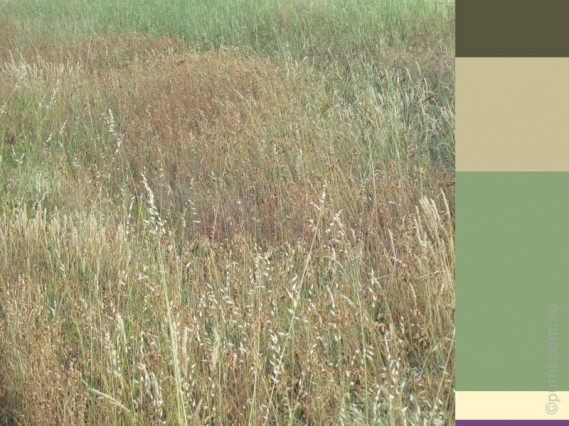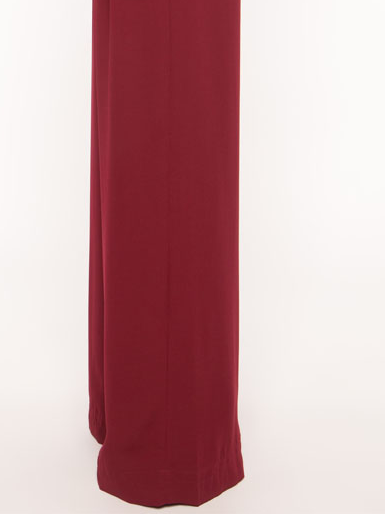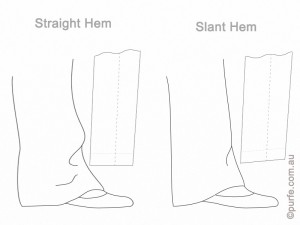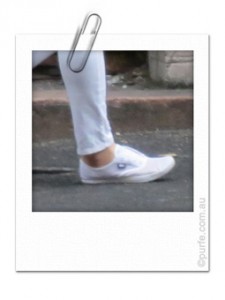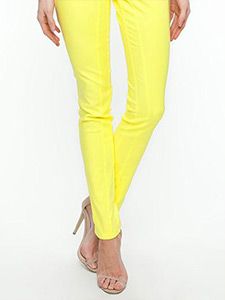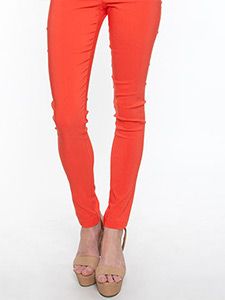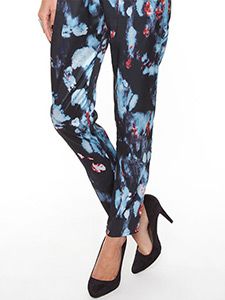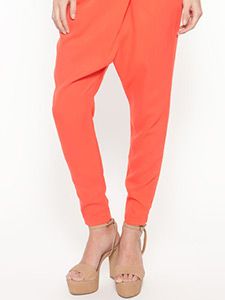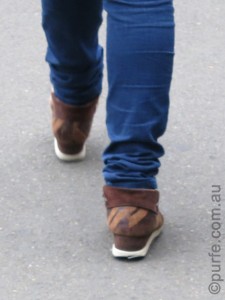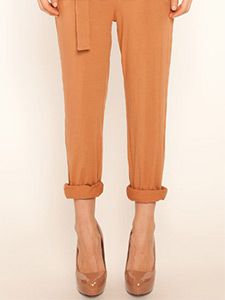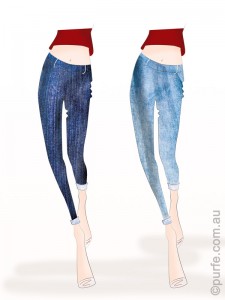One of the most frequent problems in creating contrast in an outfit is putting together garments with no obvious connections. Items with opposite characteristics placed next to each other often produce excessive contrast which can not only be bold and unflattering but also disintegrate the outfit’s composition. For example, neon-green chiffon skirt and lemon yellow bulky jumper quite seldom will be a part of a balanced look on their own.
When an outfit consists of unrelated and disjoint colours, textures or patterns, to unify them it’s essential to make a “bridge”, create an intermediary. Its purpose is to strengthen the connection between garments and create a complete story. It’s predictable that to be effective this “bridge” item requires similarity with the elements which are meant to be linked.
Where to use?
Areas of intermediary’s use are usually identical with fields of contrast. Thus, if we use two unrelated colours to create a contrast it will be logical to balance it out by another element of colour. The same is true to patterns or textures. Let’s go into details for each of them.
Colour
Colour is the most usual area for applying an intermediary.
- Colour temperature. It is a popular opinion mentioned on many style blogs that warm and cold hues should not be used together. While I agree this is a good general rule to avoid imbalance, the dots can still be connected.
The harmony of two different colour temperatures could be created with an intermediate that will tie the opposites.
A brief example can be seen in the sketch below. The top and the skirt are from different colour families – cold and warm. Together they look discordant and even conflicting. It is obvious that a link is needed. By bringing in shoes that support the pattern of the top and skirt’s hue the puzzle is solved and outfit regains its lost harmony.
- Hue. In the case of hue, the contrast is usually created by complementary colours. They are opposite on the colour wheel, therefore have nothing in common. Placed next to each other, they produce maximum vibrancy and contrast.
Adding the intermediary softens the contrast and creates a perceptual bridge between two colours. For example, red and green could be linked by brown-red or brown-green as they are the exact colours that will come out if red and green are mixed.
- Colour brightness. Too much difference in brightness can cause undesirable dramatic contrast. Employing in-between shades can help soften the look.
In the picture below the top and the skirt on the left create sharp dramatic contrast which overbalances girl’s gentle complexion. Following the same trail that helped us to unite hues before, we rely on the intermediary item. Here we introduce a jacket which adds third tonal characteristic and brings the look closer to perfection.
Pattern
This is the second area where the intermediary could be used.
Selecting in-between patterns requires a bit more sartorial funds as patterns consist of many different elements meant to be coordinated. In one of my previous posts, I have explained the levels of pattern mixing. Therefore, I will only touch on the topic of setting an intermediate.
To improve the look’s aesthetic “bridging” patterns should resemble those already in use. The similarity could be either in the style of lines, chromatic characteristics, or other levels of pattern coherence.
For example, if we combine geometric print with intricate abstract design linking pattern might remotely resemble both of them.
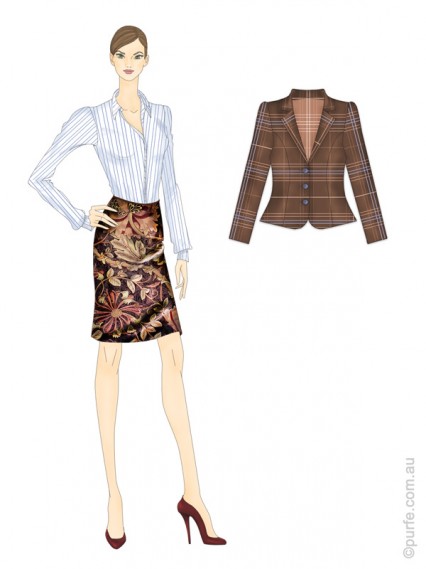
Striped dress shirt and floral skirt share nothing in colour scheme; their style of lines is also different. As intermediary, the plaid jacket incorporates skirt’s rich red-brown colour and shirt’s geometry Texture
As I have mentioned before there are no common rules for texture mixing. However, the transition textures are expected to have similar attributes to those already in use.
Shape and volume
Shapes and volumes seldom require an intermediary. It means, as long as common sense is taking into account, it is difficult to make mistakes in this area.
Final touch
As you have already noticed the process, of “linking” parts of an outfit is not a subject for sweeping generalizations. It is not easy to set strict rules and provide common instructions to follow. All I can do is to outline the problem and set the trend of thoughts. The rest is entirely up to you.
I’m sure if a person knows about relations between elements described in this article they will tend to pay a little more attention to the sophisticated ritual of dressing. That will certainly produce noticeable and pleasant changes.
You may also like to read about:
Cherry on the top or contrast principle
The Timeless Principles of Pattern Mixing
Basic Principles of an Outfit Layout: Focal Point

